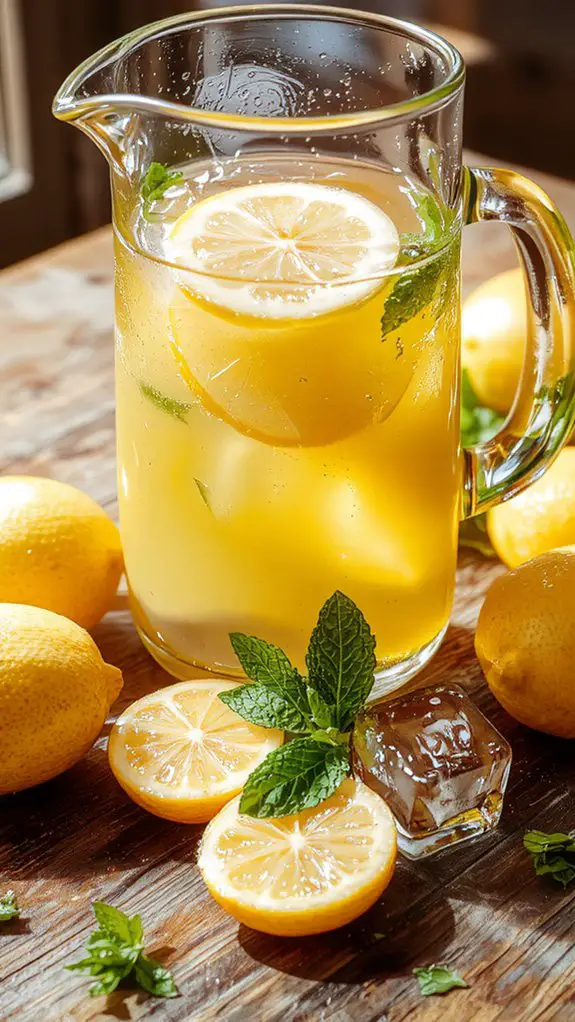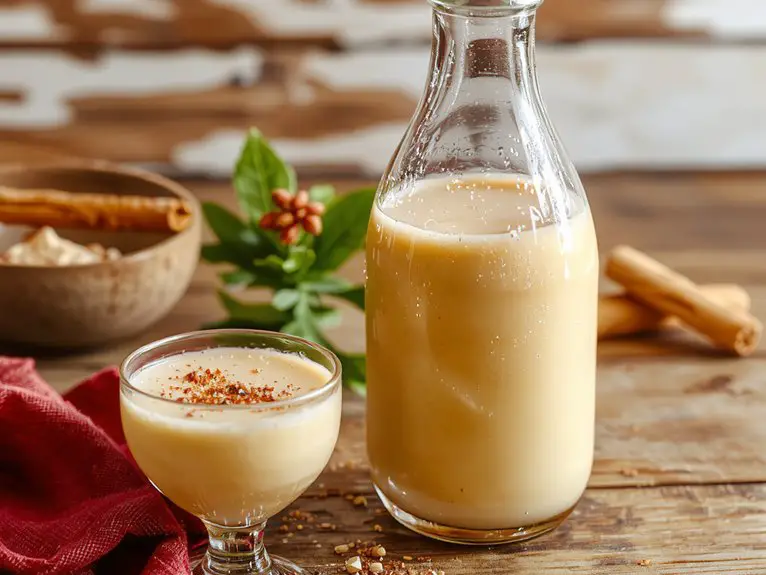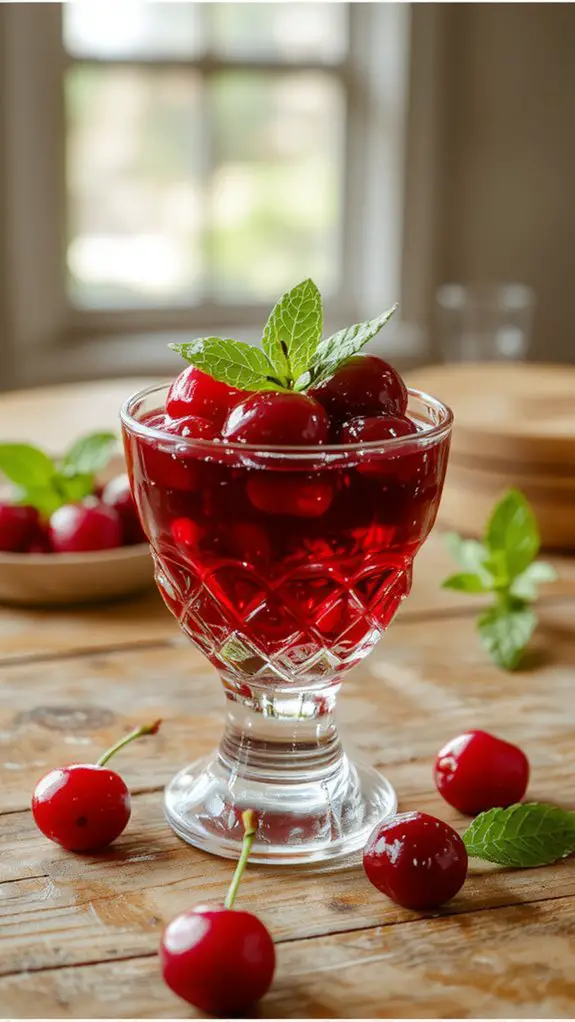Recipe
There’s nothing quite like the bright, invigorating zing of homemade lemonade—no store-bought version can compete. This recipe is my go-to for hot summer days, backyard barbecues, or anytime I need a little sunshine in a glass.
Made with freshly squeezed lemons and just the right balance of sweetness, it’s the kind of drink that instantly lifts your mood. The secret? Skip the bottled juice—real lemons make all the difference, delivering that perfect tangy-sweet punch.
One sip and you’ll swear off the powdered stuff forever. Best of all, it’s ridiculously easy to whip up, so you can enjoy that crisp, citrusy goodness in minutes. Trust me, once you try this, you’ll never go back.
Ingredients
Homemade lemonade is all about balance—tart, sweet, and invigorating. The key is using quality ingredients to let the bright, zesty flavors shine. Freshly squeezed lemon juice is non-negotiable for that vibrant tang, while granulated sugar dissolves perfectly to create a smooth sweetness.
Here’s what you’ll need and why each ingredient matters:
- Fresh lemons: Look for juicy, plump lemons with smooth skin. Roll them on the counter before juicing to maximize yield. (Pro tip: Avoid bottled lemon juice—it lacks the fresh, bright flavor.)
- Granulated sugar: This dissolves easily in water, creating a smooth syrup. You can adjust the amount to taste or swap with honey or maple syrup for a natural alternative. (Note: Honey adds a floral note, while maple syrup gives a richer depth.)
- Cold water: Use filtered or bottled water for the best taste. Chilled water keeps your lemonade briskly cool.
- Optional garnishes: Fresh mint leaves or a slice of lemon can elevate the presentation and add a subtle aromatic note. (Little win: A sprinkle of lemon zest on top makes it extra special.)
How to Make the Best Classic Lemonade Recipe Title

- Juice the Lemons: Roll each lemon firmly on the counter before cutting to release the juice. Cut them in half and use a citrus juicer or your hands to extract as much juice as possible. Straining the juice removes pulp and seeds for a smoother texture.
- Make Simple Syrup: Combine equal parts sugar and water in a small saucepan. Heat over medium heat, stirring until the sugar dissolves completely. Let it cool slightly before using—this prevents the lemonade from becoming watered down when adding ice later.
- Mix the Ingredients: In a large pitcher, combine the fresh lemon juice and cooled simple syrup. Stir well to guarantee even sweetness.
- Add Water: Pour in cold water—start with a 1:1 ratio of lemon juice to water, then adjust to taste. For a stronger or milder flavor, tweak the water amount accordingly.
- Chill Before Serving: Refrigerate the lemonade for at least 30 minutes to let the flavors meld. Over-chilling can dull the taste, so aim for a revitalizing balance.
- Serve with Ice and Garnish: Fill glasses with ice, pour the lemonade, and garnish with lemon slices or fresh mint. Stir before serving to redistribute any settled pulp or syrup.
- Taste and Adjust: Give it a final taste test. If it’s too tart, add a touch more water or syrup; if too sweet, squeeze in a bit more lemon juice.
Pro Tip: For a fun twist, muddle a few fresh berries or herbs in the pitcher for a burst of flavor.
Watch Out: Avoid over-diluting with ice, as it can make the lemonade bland. Use pre-chilled lemonade to keep it cold without adding too much ice.
Nutrition
Homemade lemonade is invigorating and offers essential nutrients. Here’s the nutritional breakdown per serving (8 oz):
| Nutrient | Amount |
|---|---|
| Calories | 99 kcal |
| Total Fat | 0 g |
| Sodium | 2 mg |
| Carbohydrates | 26 g |
| Sugars | 25 g |
| Protein | 0 g |
Chef Tips
When making lemonade at home, I always recommend using fresh lemons for the best flavor. Roll them on the counter before juicing to maximize yield.
Strain the juice to remove pulp and seeds for a smoother drink.
Adjust sweetness gradually—start with less sugar and add more if needed. Chill your glasses beforehand for extra refreshment.
Don’t forget to garnish with a lemon slice or mint for presentation.
Frequently Asked Questions
How Long Does Homemade Lemonade Last in the Fridge?
Homemade lemonade lasts three to five days in the fridge if I keep it sealed tightly. I’ll toss it if it smells off or tastes fizzy. Fresh lemon juice and sugar can spoil faster than pre-made mixes.
Can I Use Bottled Lemon Juice Instead of Fresh Lemons?
I can use bottled lemon juice instead of fresh lemons, but it might taste slightly different. Bottled juice works fine in a pinch, though I’ll adjust the sweetness since it’s often more concentrated than fresh.
What’s the Best Way to Store Lemons for Juicing?
I keep lemons fresh for juicing by storing them in the fridge’s crisper drawer. If they’re whole, I wrap them in plastic or put them in a sealed bag to lock in moisture and prevent drying out.
Can I Make This Recipe Sugar-Free or Low-Sugar?
I can make this recipe sugar-free or low-sugar by swapping sugar with a natural sweetener like stevia, monk fruit, or erythritol. It’ll still taste great, and I can adjust the amount to suit my preferences.
Is It Safe to Drink Lemonade With Pulp Left in It?
Yes, it’s safe to drink lemonade with pulp left in it. I’ve done it many times, and the pulp adds extra fiber and nutrients. If you don’t mind the texture, it’s perfectly fine to enjoy it that way.










